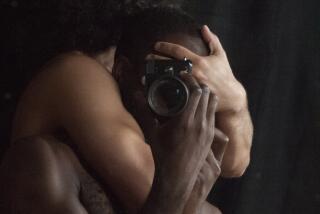Constance Stuart Larrabee; Photographed South African Tribes
- Share via
Constance Stuart Larrabee, 85, photographer noted for her portraits of South African tribes and Maryland’s eastern shore. Born in England but raised in Pretoria, South Africa, Larrabee became fascinated with photography when she received a camera for her 10th birthday. By 19 she was studying photography in London and later in Munich, returning to South Africa in 1936 to establish a portrait studio in the heart of Pretoria. She photographed such luminaries as dramatist Noel Coward, British royals and novelist Alan Paton. She also began a photographic study of South African tribes--Bushmen, Zulu, Swazi, Sotho and Transkei people. In 1944 she became South Africa’s first woman war correspondent, photographing the Allied invasion of the south of France and combat in Italy and Egypt. She moved to the United States in 1949 and married Col. Sterling Loop Larrabee, whom she had met in South Africa while he was a military attache. They settled in Chestertown on Maryland’s eastern shore, where she continued her photography and bred Norwich and Norfolk terriers. Her work, which was widely exhibited, was represented in Edward Steichen’s “The Family of Man” in the 1950s. She donated her South African photographs to the National Museum of African Art at the Smithsonian Institution, her World War II photos to the Corcoran Gallery of Art in Washington, and her eastern shore work to the Chesapeake Bay Maritime Museum in St. Michaels, Md. Her style was to catch her subjects in off-guard moments, rendering them in extreme close-ups or from unusual angles using a Rolleiflex held at chest level. “This technique and her modernist eye give her images a directness and vibrancy that have survived the decades,” according to exhibit notes provided by the Smithsonian. On July 27 of respiratory failure at her Chestertown, Md., home.
More to Read
The biggest entertainment stories
Get our big stories about Hollywood, film, television, music, arts, culture and more right in your inbox as soon as they publish.
You may occasionally receive promotional content from the Los Angeles Times.










